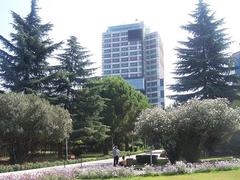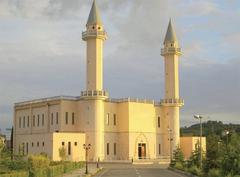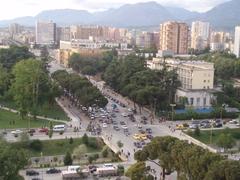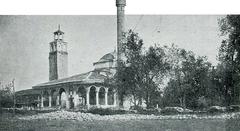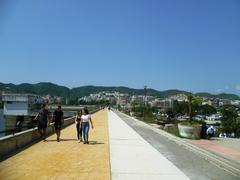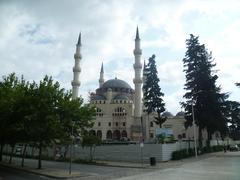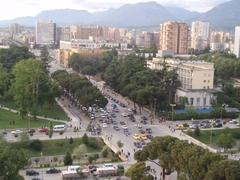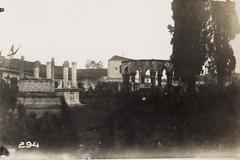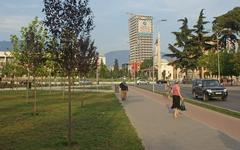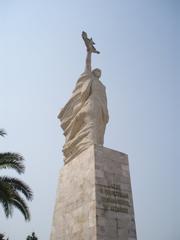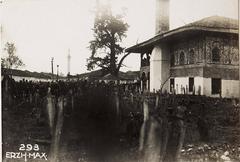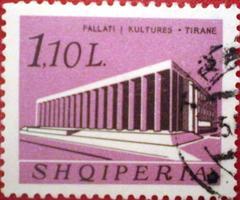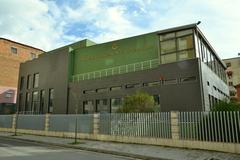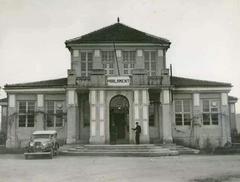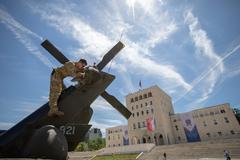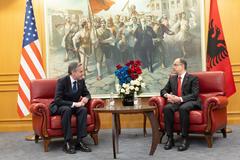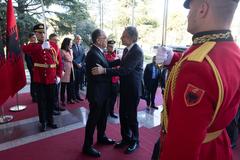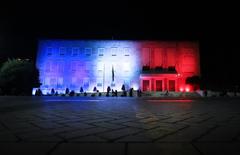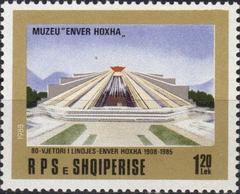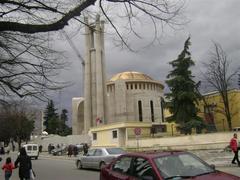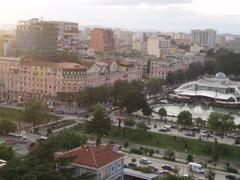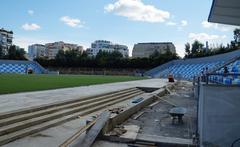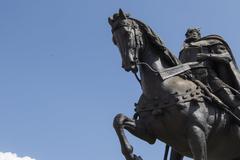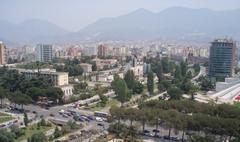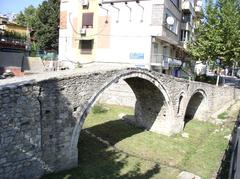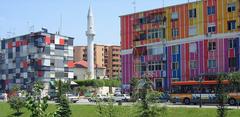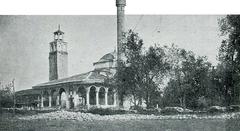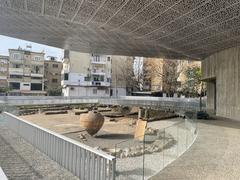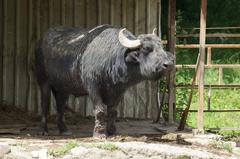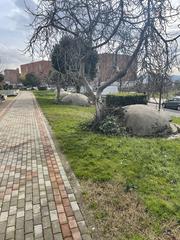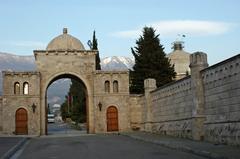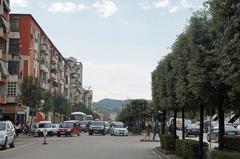Unknown Soldier Statue Tirana: Visiting Hours, Tickets, and Historical Significance
Date: 04/07/2025
Introduction
The Unknown Soldier Statue (Albanian: Ushtari i Panjohur) in Tirana stands as a powerful testament to the sacrifice and resilience of countless unnamed Albanian soldiers, particularly those who fought during World War II. Located at the historical core of Albania’s capital, this monument not only honors national heroes but also embodies the country’s turbulent 20th-century journey through occupation, resistance, and the quest for unity. Today, it serves as both a poignant site of remembrance and a vital cultural landmark, welcoming visitors at all hours to reflect upon Albania’s enduring spirit (Wikipedia; Military History Fandom; Nomads Travel Guide).
Table of Contents
- Historical Background and Origins
- Symbolism and Artistic Features
- Location and Memorial Park Setting
- Visiting Hours, Tickets, and Accessibility
- Getting There and Travel Tips
- Nearby Attractions
- Commemorative Events and Local Traditions
- Frequently Asked Questions (FAQ)
- Summary and Visitor Tips
- References and Further Reading
Historical Background and Origins
Commissioned in the aftermath of World War II by Albania’s communist authorities, the Unknown Soldier Statue was erected to commemorate the partisans and volunteers—many unknown—who lost their lives in the struggle against Italian and later German occupation from 1939 to 1944. The monument was strategically placed near the Albanian Parliament and the Tomb of Kapllan Pasha, in a location once occupied by the historic Sulejman Pasha Mosque, which was destroyed during the communist era’s drive for secularization (Nomads Travel Guide).
The statue’s creation reflects both the nation’s grief and pride, aligning with a European tradition of honoring unknown soldiers whose identities were lost in war but whose sacrifices shaped the nation’s future (Wikipedia: Tomb of the Unknown Soldier).
Symbolism and Artistic Features
The statue is a striking example of mid-20th-century Albanian monumental art, fusing socialist realism with national symbolism. It depicts a determined soldier, fist raised and rifle in hand, striding forward—an embodiment of resistance, vigilance, and collective sacrifice. The raised fist, a common symbol in socialist iconography, underscores themes of solidarity and defiance against oppression (Military History Fandom).
Key features include:
- Material and Scale: Crafted in bronze, mounted on a stone pedestal with inscriptions honoring the unknown fallen.
- Posture and Attire: The soldier wears a WWII-era uniform, standing in a dynamic, forward-facing stance.
- Setting: The memorial is surrounded by pathways, benches, and greenery, offering a tranquil space for contemplation (Live the World).
Location and Memorial Park Setting
Situated at the coordinates 41.328066, 19.821991, the Unknown Soldier Statue occupies a peaceful memorial park in central Tirana, adjacent to the Albanian Parliament and near Skanderbeg Square (Traces of War). This central location makes it easily accessible from other landmarks, including the National History Museum and the Tomb of Kapllan Pasha. The park setting provides an oasis of calm amid the city’s lively atmosphere.
Alt text: Unknown Soldier Statue in Tirana, a bronze sculpture depicting a vigilant soldier.
Visiting Hours, Tickets, and Accessibility
- Visiting Hours: Open 24 hours a day, 7 days a week. There are no formal opening or closing times, making it convenient for any schedule (Evendo).
- Tickets: Entry is free; no ticket is required.
- Accessibility: The park and monument are wheelchair accessible, with paved pathways and ramps. Visitors with mobility challenges should note that some sidewalks in Tirana can be uneven (Destination Abroad).
Getting There and Travel Tips
From Skanderbeg Square (City Center)
- Walking: Head east toward the National History Museum, continue along Rruga e Dibrës, and turn onto Rruga Skerdilajd. The statue will be on your left in the park—about a 10-15 minute walk (Evendo).
- Public Transport: Take any bus heading toward ‘Rruga e Dibrës’ and alight at ‘Rruga Skerdilajd’, then walk a few minutes to the park.
- Taxi: Taxis are readily available; simply ask for “Ushtari i Panjohur.”
Travel Tips
- Best Time to Visit: Early morning or late afternoon for pleasant weather and softer light—sunset is especially atmospheric.
- Etiquette: Maintain respectful behavior; this is a site of national remembrance.
- Guided Tours: Several historical walking tours in Tirana include the statue as a key stop (May Cause Wanderlust).
Nearby Attractions
The Unknown Soldier Statue is centrally located and close to several of Tirana’s most important historical and cultural sites:
- Skanderbeg Square: The city’s main plaza, surrounded by the National History Museum, Opera House, and Skanderbeg’s statue (Matias Travel).
- Et’hem Bey Mosque & Clock Tower: Landmarks of Tirana’s Ottoman heritage.
- Tomb of Kapllan Pasha: Historic mausoleum reflecting the city’s layered past (Live the World).
- National Gallery of Arts: Featuring major works of Albanian art, including socialist realism (Matias Travel).
- National Martyrs Cemetery and Mother Albania Statue: Memorials in the Grand Park (Traveling Season).
Commemorative Events and Local Traditions
The monument is a central venue for Albania’s national commemorations, particularly on Liberation Day (November 29) and Martyrs’ Day (May 5), when officials, veterans, and citizens lay wreaths and pay tribute to the fallen. It also serves as a surrogate grave for families whose loved ones remain unidentified—a site of both mourning and pride (TiranaPost).
Frequently Asked Questions (FAQ)
Q: What are the visiting hours of the Unknown Soldier Statue in Tirana?
A: The monument is outdoors and accessible 24/7 with no formal visiting hours.
Q: Is there an entrance fee or ticket required?
A: No, visiting the Unknown Soldier Statue is free.
Q: Are guided tours available?
A: Yes, many Tirana walking tours include the monument. Audio guides and apps such as Audiala also offer historical insights.
Q: Is the site wheelchair accessible?
A: Yes, paved paths and ramps are available, though city sidewalks may be uneven in places.
Q: What is the best time to visit?
A: Early morning or late afternoon for comfortable temperatures and beautiful light; Liberation Day ceremonies offer a unique cultural experience.
Q: Can I take photos at the monument?
A: Photography is allowed, but please be respectful, especially during ceremonies.
Summary and Visitor Tips
The Unknown Soldier Statue in Tirana stands as a living symbol of Albania’s resilience and collective memory. Its evocative design and central location provide a meaningful experience for visitors, whether during a quiet moment of reflection or as part of a vibrant national commemoration. With free, all-hours access and proximity to key landmarks, it’s an essential stop for anyone seeking to understand Tirana’s rich historical tapestry (Live the World; Matias Travel). Enhance your visit with a guided tour or mobile app for deeper context.
References and Further Reading
- The Unknown Soldier (statue), 2023, Wikipedia
- Unknown Soldier (statue), 2023, Military History Fandom
- Statue of the Unknown Partisan, 2023, Nomads Travel Guide
- 77th Anniversary of Tirana’s Liberation Ceremony, 2023, TiranaPost
- The Unknown Soldier Statue, 2023, Live the World
- The Unknown Soldier Statue, 2023, Evendo
- Best Things to Do in Tirana, 2023, Matias Travel
- Unknown Soldier Statue, Traces of War
- Is Tirana Worth Visiting? Destination Abroad
- Tirana, Albania: What to Visit and To Do, Traveling Season
- Albanian Social Etiquette Guide, Albania Visit
- Tirana One Day, May Cause Wanderlust
- Unknown Soldier Statue, GPSmyCity
- Visit Tirana – Official Tourism Website
- Salt in Our Hair – Tirana Guide
